zoom-zoom/iStock/GettyImages
Tempered glass bakeware has been in the American marketplace since before World War I, when the Corning company launched its Pyrex brand. Glass bakeware has been used ever since, and glass cookware is also available for stovetop and oven use. Glass cookware and bakeware are versatile, but do require a few adjustments to cooking methods and temperatures.
Stovetop Cookware
Stovetop glass cookware possesses several interesting characteristics. Its biggest advantage is that the contents of the pot can be seen at all times, making it easier to monitor the food as it cooks. This in turn minimizes the risk of the pot boiling over or boiling dry, both of which can be inconvenient and occasionally dangerous. The cookware can also be used in the microwave, oven or refrigerator, making it highly versatile.
Adjusting for Glass Cookware
Glass cookware behaves differently than metal cookware in some ways. It heats up more quickly than most metal cookware, which can shorten cooking time slightly. The sides of a glass pot also radiate heat, while most metal pots heat primarily from the bottom. This can produce more even heating. Cooking time can also be shortened by microwaving your food in the glass pot before moving it to the stovetop. On the other hand, glass cookware tends to retain heat and allow foods to cook on and stick to the pot.
Glass Bakeware
Many bakers prefer glass bakeware for certain types of baking. Square, rectangular and round cake pans, oval roasters, pie plates, and casserole dishes are all available from a variety of glass bakeware manufacturers. As with glass cookware, visibility is a major advantage of glass baking pans. The baker can tell at a glance how well a pie crust or cake is browning, and can adjust the temperature or rack placement accordingly. The ability to freeze and refrigerate food in the baking dish is another benefit, and airtight snap-on lids are available for many of these dishes.
Adjusting for Glass Bakeware
Like glass cookware, glass bakeware heats up very quickly and transfers that heat efficiently to the food being baked. In most cases, bakers must reduce oven temperatures by 25 degrees Fahrenheit to avoid excessive browning in glass pans. If glass is used for cookies or thin cakes, it may also be necessary to shorten baking times to compensate for the greater heat transfer with glass. When baking with glass, be aware that it is a fragile material and must be handled with care. Avoid sudden temperature changes, and always rest the hot pans on a dry towel or cork trivet to cool. Never place glass bakeware under a broiler or directly on a stove burner.
Related Articles

Can You Cook Frozen Dinners in Glass?

Does Heat Transfer Evenly Through ...

How to Cook Cake in a Glass Dish

How to Use Smartware Cookware

Can You Use a Glass Pan to Cook a Roast?
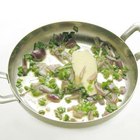
What Is the Best Cookware for Electric ...
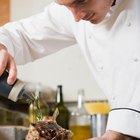
What "Tools of the Trade" Cookware is ...
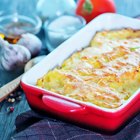
What Are the Benefits of Stoneware ...
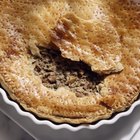
Glass Pie Pan Baking Tips

What Are the Types of Fine China?
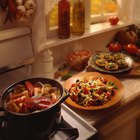
Characteristics of Oven-proof Plates
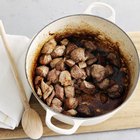
Can Ceramic Cookware Be Used on ...

What Is Better for Cookware: Glass, ...
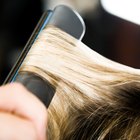
Titanium Vs. Tourmaline Flat Irons
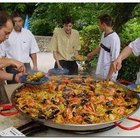
What is a Paella Pan?

Cooking With Glass Vs. Ceramic

Can I Make a Cake Mix in a Ceramic Dish?

Is Revere Ware Aluminum?
Can You Oven Cook With Pottery?
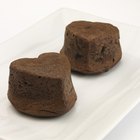
What Is a Souffle Dish?
References
Writer Bio
Fred Decker is a trained chef and prolific freelance writer. In previous careers, he sold insurance and mutual funds, and was a longtime retailer. He was educated at Memorial University of Newfoundland and the Northern Alberta Institute of Technology. His articles have appeared on numerous home and garden sites including GoneOutdoors, TheNest and eHow.